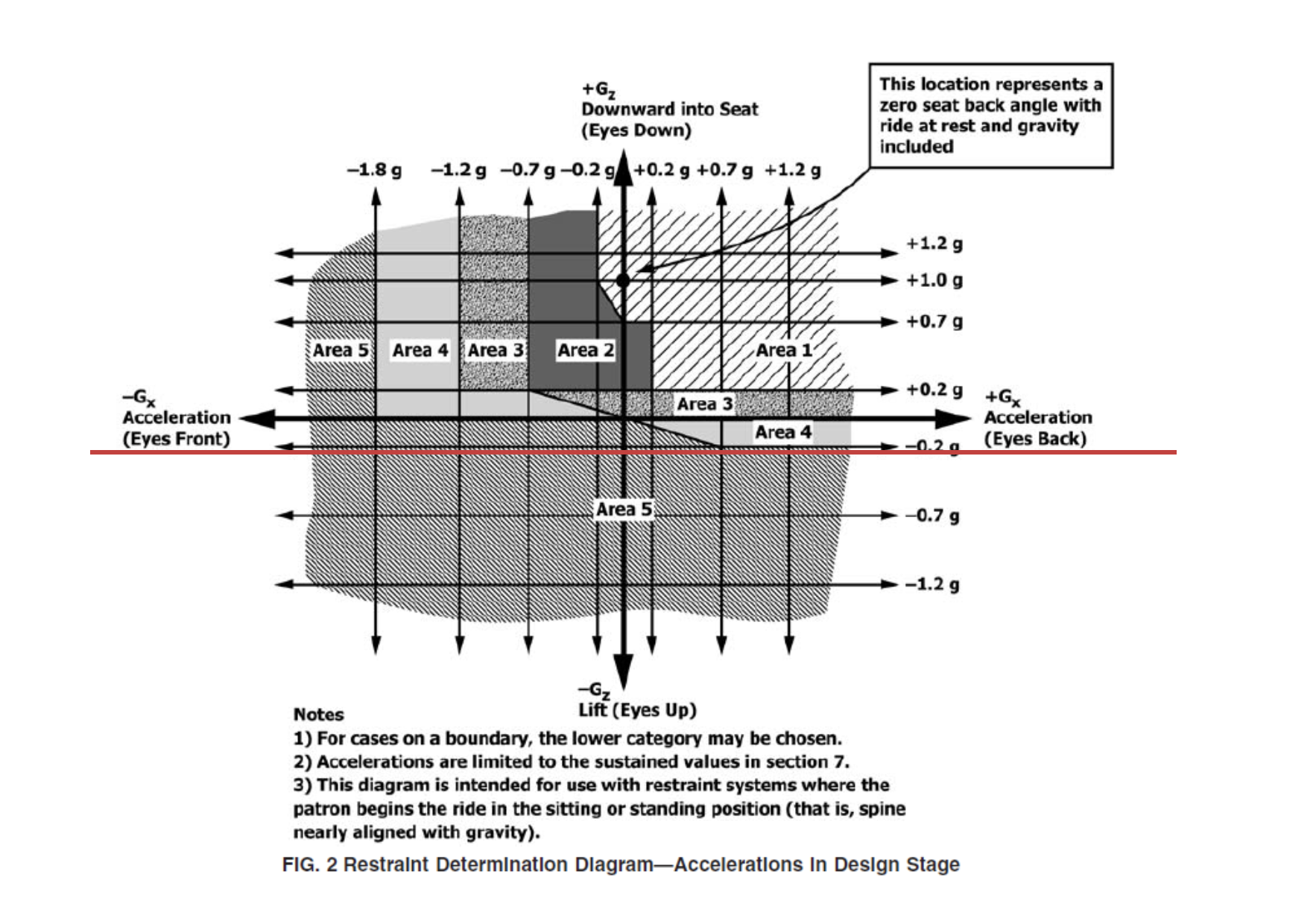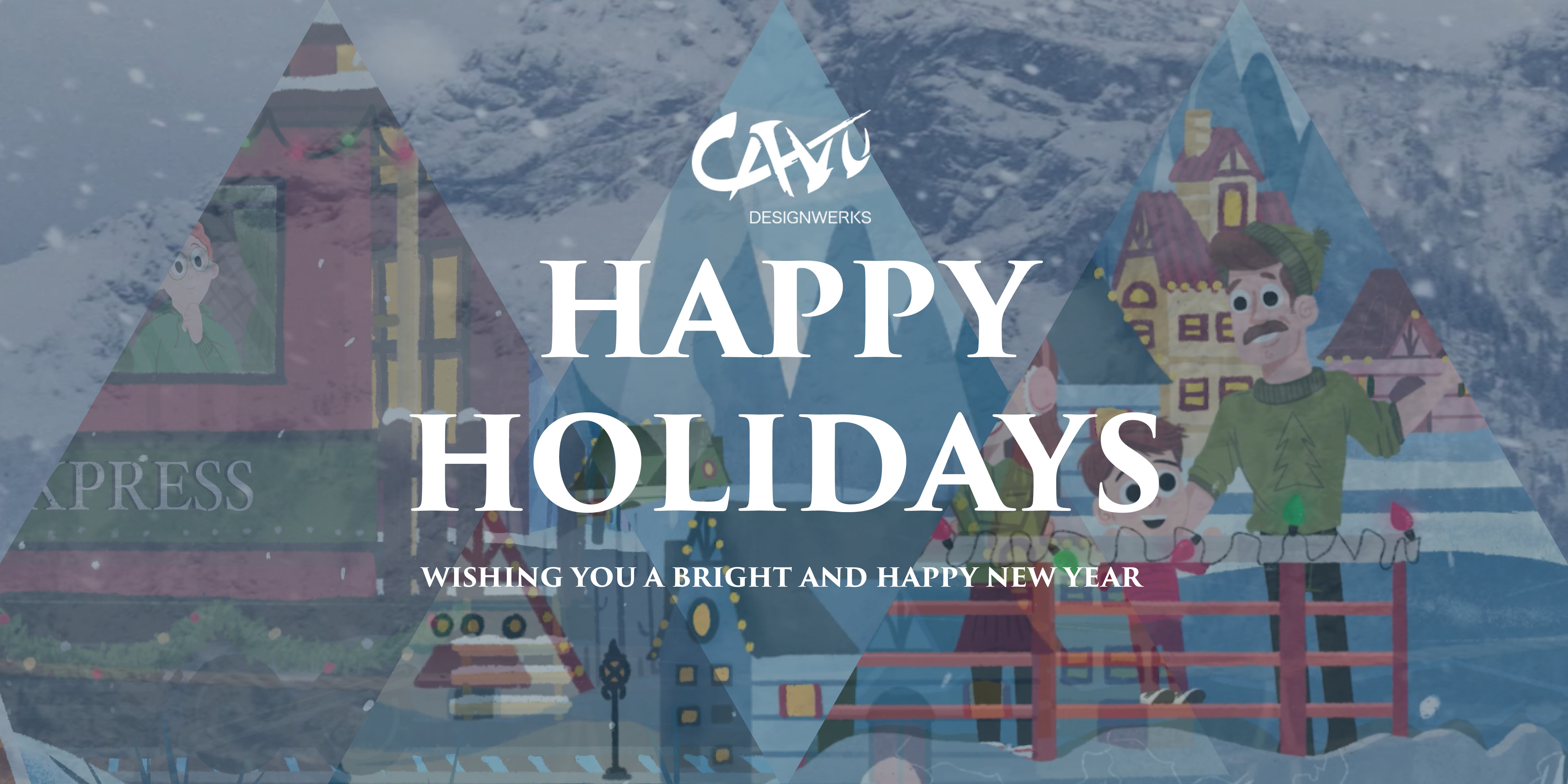Ever wondered how Santa can deliver presents around the world in one night? Us too. More importantly, have you ever wondered how often Santa’s sleigh adheres to ASTM safety regulations? US TOO. From what we’ve seen… the elves could use a refresher on their ASTM standards implementation.
Here at CAVU, we put safety at the forefront of all ride systems including sleigh rides, even the Big Man’s, are no exemption. Think about the magnitude of the ramifications if Santa’s sleigh were to break or cause injury?! That is where our trusty engineers elves come in. We have taken it upon ourselves to review Santa’s sleigh and determine what needs to be done to make it ASTM compliant before the big night.
Restraints
First, let’s begin with the most apparent safety flaw… Where is his seatbelt?
Restraint design is a very big part of the F2291 standard. The standard classifies restraints into five different classes (classes 1, 2, 3, 4, and 5) with the main determining factor being the negative z G-forces (the forces that lift the rider out of their seat) that the rider experiences. We’ve covered restraints in detail in a previous post, here.

In every movie that we’ve seen, the sleigh has no restraint. According to the figure above, this would only be acceptable if Santa experienced strictly positive G-forces (always being pushed into the back or bottom of his seat). If you’ve seen the movies though you know this isn’t the case. Santa’s sleigh often makes sudden and steep descents as well as screeching halts. We would venture to say that those steep descents cause a negative z acceleration greater than –0.2 necessitating a Class 5 restraint.
So, what do the elves need to know for the Class 5 restraint for the sleigh? The requirements for a Class 5 restraint can be found in the table below. Using this table, we can begin to create the restraint system. One factor that we are not yet considering is containment, which we’ll talk about in the next section.
| Primary Restraint | Secondary Restraint | ||
| 1 | Number of patrons per restraint device | One | One |
| 2 | Final Latching position relative to the patron | Variable with respect to patron | Fixed or variable with respect to patron |
| 3 | Type of locking | Automatic locking | Manual or automatic locking by operator |
| 4 | Type of unlocking | Manual or automatic unlocking of the restraint by the operator | Manual or automatic locking by operator |
| 5 | Type of external correct or incorrect indication | External indication required
Monitored by control system |
Visual check of the restraint |
| 6 | Means of activation | Manual or automatic opening/closing | Manual or automatic opening/closing |
| 7 | Redundancy of Locking device | Redundancy for locking device | Not required. Secondary restraint should be independent of the primary restraint |
Containment (Santa & His Helpers)
The easiest way to meet the requirements of Class 5 restraints on Santa’s sleigh is to use a combination of a lap bar and a seatbelt. A lap bar and seatbelt are required for each rider (requirement 1). The lap bar serves as the primary restraint. To lock the restraint, we can use either a ratchet and pawl system or pneumatic locking cylinders. Both types of locking systems allow for latching relative to the patron (requirement 2), automatic locking (requirement 3), manual or automatic unlocking by the operator Elf (requirement 4), and manual or automatic opening/closing (requirement 6). Redundancy is achieved by using two sets of locking devices (requirement 7). Requirement 5 is achieved by using a sensor and LED light that monitors the position of the locking device and talks to the control system. The seatbelt must meet all the secondary restraint requirements.
The second part of restraint design is containment. F2291 requires that a containment analysis be completed with each new restraint design. While the restraint might be a certain class level it still has to be proven that the rider cannot get out their restraint and that the restraint contains the rider during the forces experienced on the (sleigh)ride
Sounds easy enough, right? Well, not so fast. There is a huge challenge with this when designing a restraint system that can contain both a 75lb Elf and Mr. Clause himself.
Our lap bar needs to be designed to contain Santa AND his helpers. This is often accomplished by angling the seat back and seat bottom with respect to the floor and the restraint to make a Z type shape. Shin bars are often added to the lap bar to keep the rider in that Z shape.

Redundancy (Reindeer Power)
The requirement for redundancy in the experience comes from the Hazard Mitigation section of F2291. When designing any ride, one of the first steps is a hazard analysis that lists all the possible failures that can occur during the ride experience. These failures are then rated for their severity, occurrence, and ability to detect. Each of these ratings is multiplied together to give an overall score. The higher the score, the greater the need there is to mitigate it.
With this experience, one of the largest hazards would be loss of lift causing the sleigh to fall out of the sky! The way to mitigate this hazard is to have redundant motors, or in this case, reindeers, that allow the sleigh to keep flying even when one or more, reindeers get tired.
How many reindeers does it take to fly the sleigh? This is unclear to us as we have not been able to measure the thrust of a reindeer. However, it does seem like there is some redundancy as Rudolph’s job is to just guide the sleigh, not pull it. If needed, Rudolph could step and save the day, yet again.
Loose Articles (Presents)
We’ve all seen the giant sack of toys on the back of the sleigh, could you imagine if one were to fall during flight?! I can’t imagine Santa’s legal team is ready for the fallout of a lawsuit from a civilian taking a present to the head.
Loose articles fall under the Hazard Mitigation section of F2291. The consequences of a loose article falling from a ride vehicle are evaluated for their severity to aid in determining if loose articles are allowed on the ride or not.
A simple and safe solution for present delivery would be to place the presents in a locked compartment of the sleigh. The compartment may only be unlocked after the sleigh has come to a complete stop.
Design Standards/Methods/Approval
ASTM F1193 is all about quality control, manufacturing, and documentation standards. Among the requirements of this standard are that manufacturers must keep thorough records of employee and material certifications, perform inspections, and ensure that employees have adequate training. We can’t argue that Santa’s elves build quality toys. But who trained the elves to build Santa’s sleigh?
We also doubt that records of material sourcing and weld inspections are being kept. After all, the elves are very busy all year-round making toys for all the world’s children – there’s no time for paperwork! We’re assuming that there is room for improvement in this area.
These are only a few of the ASTM standards that need to be reviewed and implemented on Santa’s sleigh. It’s highly recommended that the entire sleigh design, intended use, and containment be thoroughly analyzed before he takes flight again.
Santa, if you are reading this, we invite you to join us at the Spring or Fall F24 conference to learn about the ASTM standards that need to be met to keep you and your helpers safe. Your elves better get to work on the changes above… we expect to see at least a restraint come Christmas Eve.
Wishing you all a happy and SAFE holiday season from all of us at CAVU!

